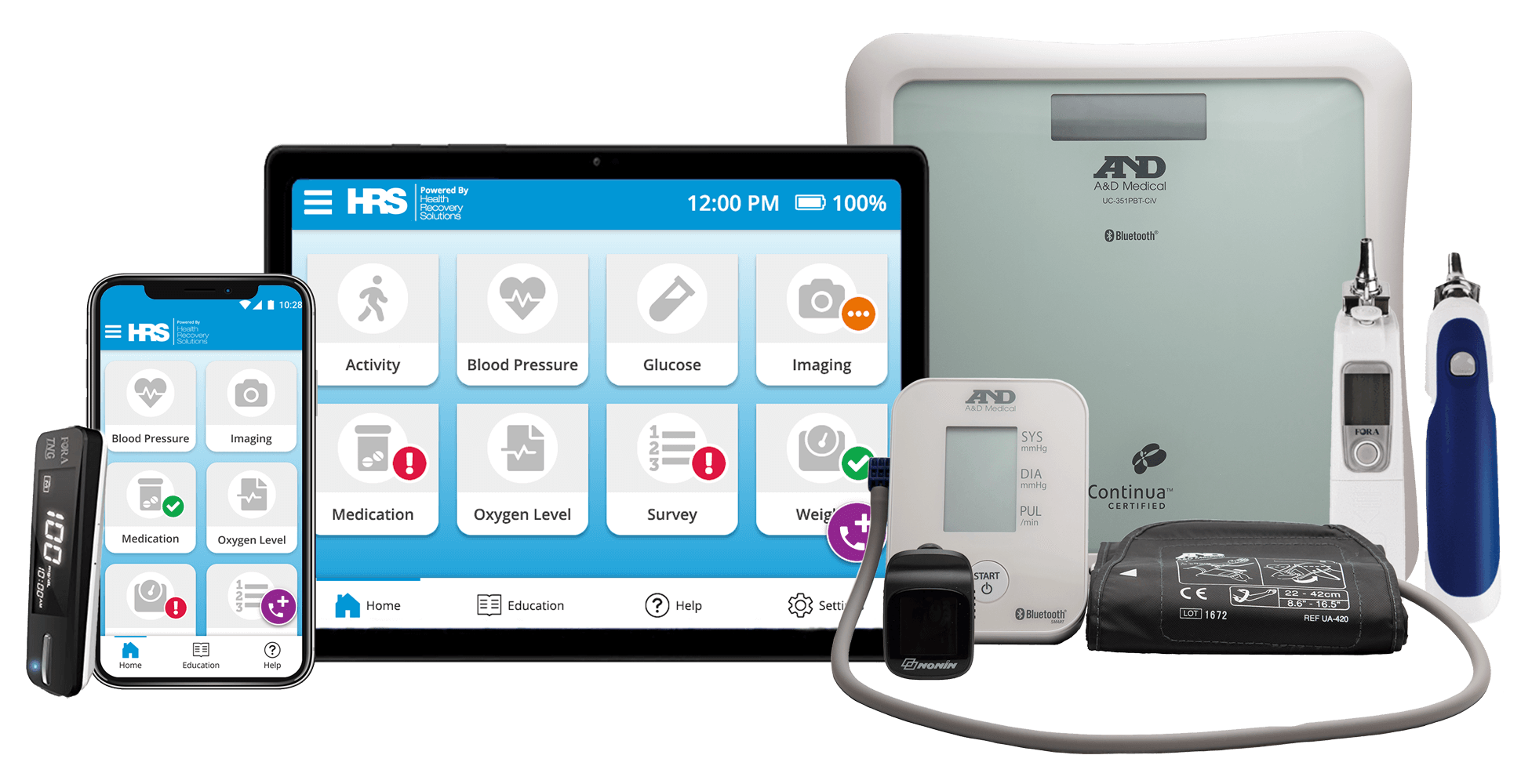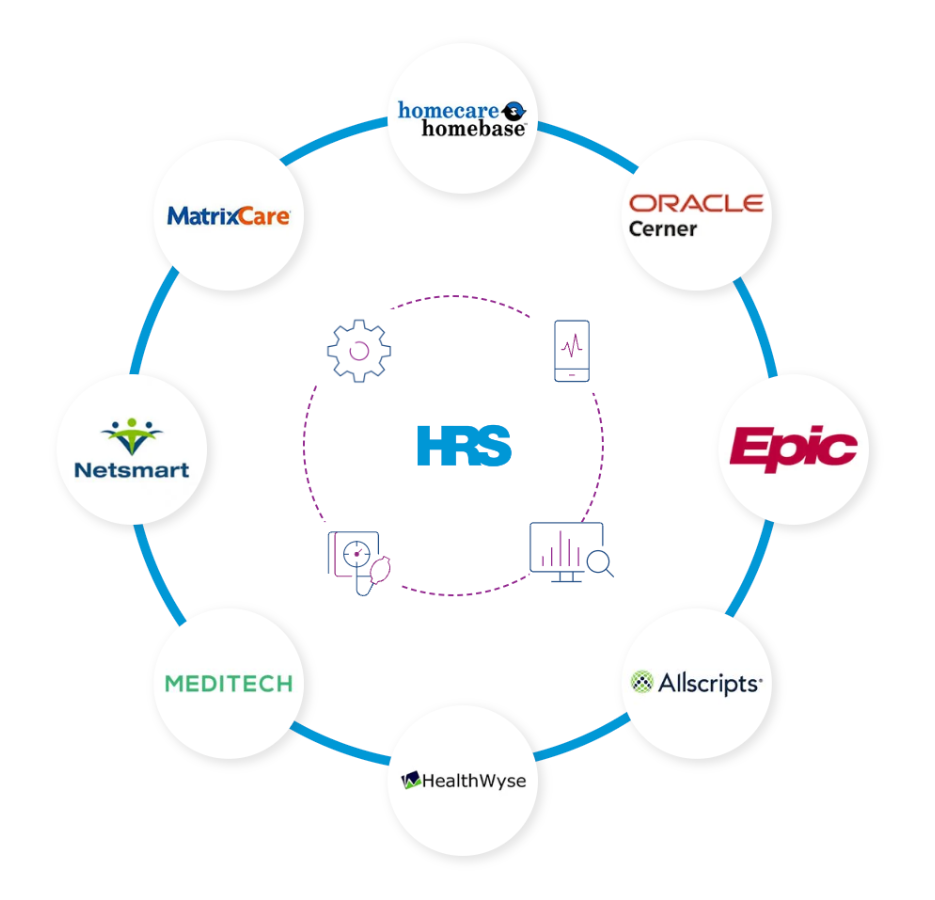Telemedicine software enables doctors and patients to communicate and manage care remotely. It is used for teleconsultations, remote diagnoses, telemonitoring, telecare, teletherapy, and other similar applications.
Telemedicine falls under the umbrella of telehealth, which is a broader concept that refers to the management of a patient’s care through technology. It is defined as “practicing medicine at a distance.” Healthcare providers examining, observing, and treating patients virtually is a large piece of telemedicine. Virtual visits, medication management, specialist consultations, and chronic disease management all fall within the realm of telemedicine
Telemedicine, telehealth, and remote patient monitoring may be used interchangeably, but there are nuances to each. Learn more in this brief, 2-minute overview video.
Types of Telemedicine Software
There are several types of telemedicine solutions available on the market today. These include teleneuropsychology, telenursing, telepharmacy, telerehabilitation, and other “tele” solutions. These platforms allow healthcare providers to connect with their patients through video or voice calls, mobile applications, or through an online portal.
Remote patient monitoring is one subset of telemedicine that uses software to continuously monitor and transmit vital signs, which may include a patient’s temperature, weight, blood pressure, heart rate, or blood glucose levels.
When choosing telemedicine software providers, consider both synchronous and asynchronous solutions, as each comes with its advantages.
Synchronous Telemedicine Software
Synchronous telemedicine software facilitates an efficient exchange of information and provides the opportunity to seek additional information and make clinical decisions in real-time, especially in urgent situations. Synchronous solutions enable direct patient-provider communication and allow doctors to perform teleconsultations, teletherapy, telemonitoring, and more in real-time.
Asynchronous Telemedicine Software
The difference between synchronous and asynchronous telemedicine software is that synchronous software allows for real-time communication with a provider, while asynchronous does not allow real-time communication. Asynchronous solutions enable providers to send reminders and other messages without the need for a live session. This allows practitioners to manage their schedule more efficiently as they can designate time that works for them to review messages and respond to their remote patients. Also known as “store-and-forward”, this form of telemonitoring is popular amongst specialties requiring image or video sharing, like dermatology, radiology, orthopedics, and ophthalmology.

HRS' Comprehensive Suite of Solutions
From Bluetooth-enabled biometric monitoring devices to videoconferencing capabilities for virtual visits and automated voice/text messages for symptom surveys, HRS offers a customizable suite of solutions to support your telemedicine program.
Key Features to Look for in Telemedicine Software
In today's world, telemedicine has become an essential component of healthcare delivery, despite the initial intimidation that one may feel while getting started. With both healthcare providers and patients seeking more convenient ways to provide and access care, technology has become a reliable source of support. In fact, the use of remote patient monitoring technology has increased by 1,300% between 2019 and 2022, and this trend is expected to continue.
Therefore, when considering new telemedicine software for your organization, it's crucial to keep in mind some essential features to look out for. These features include:
- Video conferencing capability
- Secure messaging
- EMR integration
- Patient scheduling
- Remote patient monitoring
Video conferencing capability
Video conferencing and virtual visits allow two-way interactions in real-time, enabling practitioners to increase patient touch points and improve engagement and satisfaction. The immediacy of video conferencing also allows practitioners to connect with their patients as soon as they detect any abnormal biometric reading and ensure that the patient’s condition doesn’t further deteriorate.
Secure messaging
Telemedicine involves the sharing of sensitive personal health information; therefore, security safeguards are an absolute necessity. Telemedicine security threats can be minimized by adopting cyber security best practices, including data encryption, secure communication protocols, multi-factor authentication, and, most importantly, adherence to HIPAA and SOC-2 guidelines.
EMR integration
Clinicians and care teams may be apprehensive about the possibility of additional workload when introduced to new telemedicine software. Integrating patient monitoring protocols into existing Electronic Medical Record (EMR) systems can solve this problem efficiently, by providing a seamless flow of biometrics into the patient’s EMR. EMR integration capability in the software saves the team time and effort since all processes occur via one platform that they're already using.
Patient scheduling
Providing an easy way to schedule an appointment from both the practitioners' and patients' end can help reduce missed appointments. Practitioners can provide a schedule with available time slots. At the same time, patients can choose a convenient slot with just a few clicks. It’s even more effective when the software comes with automated text or email appointment reminders.
Remote patient monitoring
Having remote patient monitoring as part of your telemedicine solution comes with many benefits, including opportunities to:
- Improve data-driven clinical decision making
- Improve patient self-management and care plan adherence
- Reduce the cost of care
- Optimize clinical staff efficiency
- Enhance patient experience and satisfaction, and more

HRS EMR Integrations
Our in-house Integrations team works with clients to integrate our solution with existing EMRs and EDWs. This process streamlines documentation and saves our clients money by eliminating the need for a third-party integration vendor.
4 Factors to Consider Before Choosing Telemedicine Software
The right telemedicine software can make all the difference for you, your staff, and your patients, so it is crucial to consider these factors when choosing yours:
1. Pricing
When deciding on telemedicine software, be sure to consider the associated costs that could arise from the hardware, integrations, and number of users — plus any setup or monthly charges. Watch out for hidden costs, such as unexpected upgrades or maintenance payments, that may appear along the way.
2. Security and HIPAA compliance
The most basic, but essential, security measure for any telemedicine software is HIPAA compliance. This ensures that patients’ information shared via the software is protected and private. All transmitted data must be encrypted so it cannot be accessed without authorization. The best software will have robust cybersecurity protocols to protect patient data.
3. User-friendliness
Ensuring the software has intuitive navigation and an easy-to-use interface is essential to drive patient and clinician adoption. The software must have ongoing product development and support to minimize technical issues like bugs and application crashes, and continuously improve the interface.
4. Customer support
The best telemedicine software providers offer 24/7 support to both patients and providers to ensure that there’s always someone to assist, even after business hours.
FirstHealth Offers a Powerful Look at Hybrid Telemedicine in Action
Many experts say a combination of in-person care with telehealth is the future of telemedicine. FirstHealth of the Carolinas, a client of Health Recovery Solutions, shows how it's done in this article featured in Healthcare IT News.
The Bottom Line: Telemedicine is the Future of Healthcare Delivery
Telemedicine software is invaluable for healthcare professionals to connect with their patients anywhere, anytime. With the right solution in place, providers can improve access to care for all their patients while reducing the costs associated with clinic visits.
Health Recovery Solutions (HRS) has worked with over 400 US Health Systems to remotely monitor more than 400,000 patients on our platform. Book a demo today to learn how we can support your organization.